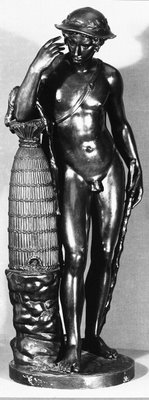Bringing back the Royal Opera
One of the most amazing theatrical experiences of my life was not particularly because of the performance on the stage but because of the location. I sat in the king's box, albeit on the edge of a staircase, of the Opéra royal at Versailles one year, for a performance sponsored by the Centre de Musique Baroque de Versailles. According to an article I read recently, that space has something new to recommend it and was the setting of perhaps the year's most interesting celebration of the Mozart anniversary. Here is a section of the article by Jean-Louis Validire (Un nouveau décor pour l'Opéra royal, November 20) in Le Figaro (my translation and links added):
The audience that was present Saturday for the premiere performance of Mozart's ballet-pantomime Les Petits Riens, followed in the second half by Gluck's ballet Don Juan ou le Festin de pierre, had the privilege of discovering a very lovely reconstruction of a spectacle such as it would have been staged at the time of its creation. Faithful to its mission, the Centre de musique baroque de Versailles wanted to show «dans son jus» two works illustrating in its own way the 250th anniversary of Mozart's birth. The theme selected, the second trip the composer made to Paris in 1778, allowed for a snapshot of the broad musical activity in the royal capital at the time and to underscore this crucial moment in the composer's evolution.Validire admired the Gluck piece even more than the Mozart. A patron, Albert Kfoury, made possible the creation of the Gluck set pieces, the beginning of a project to create a collection of traditional sets that can be used for all the stagings by the Centre de musique baroque.
Les Petits Riens, as its name seems to indicate, is certainly not Mozart's most unforgettable work. Performed at the Opéra de Paris in 1778, it does represent, however, his only incursion into the genre of the ballet-pantomime, a suite of little scenes with a libertine character, on a choreography of Jean-Georges Noverre, of which no trace remains. Neither did Mozart give any importance to the score, a part of which is the work of François-Joseph Gossec, written to flatter the taste of the French public and perhaps to trigger an operatic commission that never happened.
It was not so much the cautious interpretation of the Orchestre des Folies françoises, conducted by Patrick Cohën-Akénine, with its very pastoral duck-pond atmosphere thanks to the natural horns, that impressed. It was the beauty of the set pieces, recreated by Antoine Fontaine, that move thanks to the original, wondrous machinery of the Opéra royal, the only example of such in the world. We have technical director Jean-Paul Gousset to thank for making the decision to reconstruct a traditional backdrop, using period conditions. Antoine Fontaine, who worked with Sofia Coppola in the Théâtre de la Reine for the film Marie Antoinette, for the outdoor scene in Les Petits Riens, used a black-and-white sketch by Pâris showing an autumnal French garden intended for another opera, L'Amant Sylphe. The Temple of Love, in Belvedere style, that disappears magically with machinery tricks, was also inspired by the same work, in which it was the Temple des Génies.
"We decided to be radical in using all the original techniques, including for example glue made from rabbit skin which gives a more luminous appearance and painting with tempera, with period materials [...]," explains Antoine Fontaine. The magnificent colors, with acidic blues and greens, were made with inspiration from Fragonard. A lot of work that imposed its logic on the choreography by Marie-Geneviève Massé, totally invented in that there are not even commentaries on the spectacle presented in June 1778.
UPDATE:
See also Marie-Aude Roux, Un ballet de Mozart sorti du placard (Le Monde, November 21).


































































